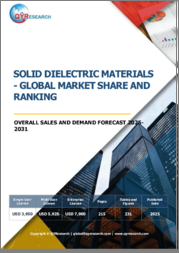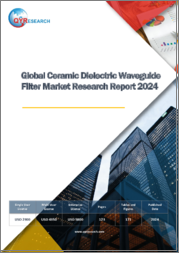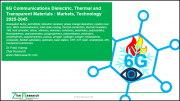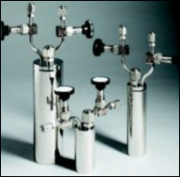
|
시장보고서
상품코드
1361725
세계의 저유전율 재료 시장 보고서Global Low Dielectric Materials Market Report |
||||||
저유전율 재료 시장의 세계 수요는 2023-2030년 조사 기간 동안 CAGR 8.72%로 성장하여 2022년 47억 3,000만 달러에서 2030년에는 92억 3,000만 달러에 가까운 시장 규모에 도달할 것으로 추정됩니다.
저유전율 재료 시장의 미래는 유망합니다. 저유전율 재료 시장의 주요 촉진요인은 PCB 및 마이크로 일렉트로닉스와 같은 전자 부품 제조에서 이러한 재료에 대한 수요 증가입니다. 또한, 항공 교통량의 증가로 인해 전 세계적으로 안테나와 랜덤에 대한 수요가 증가하여 저유전율 재료에 대한 수요가 더욱 높아졌습니다. 높은 내열성은 저유전율 재료의 급격한 성장의 주요 이유입니다. 그러나 기존 재료에 비해 비용이 높기 때문에 가까운 장래에 시장 성장에 중요한 장애물이 될 것으로 예상됩니다.
이 보고서는 Porter's Five Forces 모델, 시장 매력도 분석, 밸류체인 분석을 다루고 있습니다. 이러한 도구는 산업 구조를 명확하게 파악하고 세계 수준에서 경쟁의 매력을 평가하는 데 도움이 됩니다. 또한 이러한 도구는 저유전율 재료 세계 시장에서 각 부문을 포괄적으로 평가할 수 있습니다. 저유전율 재료 산업의 성장과 동향은 이 조사에 대한 전체적인 접근 방식을 제공합니다.
지역별 분석:
이 섹션에서는 북미, 유럽, 아시아태평양, 라틴아메리카, 중동 및 아프리카의 저유전율 재료 시장의 현재 및 미래 수요를 강조하는 지역 전망을 다룹니다. 또한, 주요 지역별로 각 용도 부문의 수요, 추정 및 예측에 초점을 맞추고 있습니다.
요청이 있으시면 저희에게 연락 주시기 바랍니다. 저희 조사팀은 고객의 요구에 따라 맞춤형 보고서를 제공할 수 있습니다.
목차
제1장 서문
제2장 주요 요약
- 시장 하이라이트
- 세계 시장 현황
제3장 저유전율 재료 : 산업 분석
- 서론 : 시장 역학
- 시장 성장 촉진요인
- 시장 성장 억제요인
- 시장 기회
- 업계 동향
- Porter's Five Forces 분석
- 시장 매력도 분석
제4장 밸류체인 분석
- 밸류체인 분석
- 원재료 분석
- 원재료 리스트
- 원재료 제조업체 리스트
- 주요 원재료 가격 동향
- 잠재적 바이어 리스트
- 마케팅 채널
- 직접 마케팅
- 간접 마케팅
- 마케팅 채널 발전 동향
제5장 COVID-19 발생의 영향 분석
제6장 저유전율 재료 세계 시장 분석 : 유형별
- 개요 : 유형별
- 실적 데이터와 예측 데이터
- 분석 : 유형별
- 열가소성
- 열경화성
- 세라믹
제7장 저유전율 재료 세계 시장 분석 : 재료 유형별
- 개요 : 재료 유형별
- 실적 데이터와 예측 데이터
- 분석 : 재료 유형별
- 불소수지(PTFE, 기타(ETFE, FEP, PFA))
- 변성 폴리페닐렌 에테르
- 폴리이미드
- 환형 올레핀 공중합체
- 시아네이트 에스테르
- 액정 폴리머
- 기타(세라믹, BCB, SiLK, SLK, PEEK)
제8장 저유전율 재료 세계 시장 분석 : 용도별
- 개요 : 용도별
- 실적 데이터와 예측 데이터
- 분석 : 용도별
- 인쇄회로기판
- 안테나
- 마이크로일렉트로닉스
- 와이어 및 케이블
- 레이돔
- 기타(CMOS 디바이스, 센서 디바이스)
제9장 저유전율 재료 세계 시장 분석 : 지역별
- 지역별 전망
- 서론
- 북미의 매출 분석
- 개요, 실적과 예측
- 북미 : 부문별
- 북미 : 국가별
- 미국
- 캐나다
- 멕시코
- 유럽의 매출 분석
- 개요, 실적과 예측
- 유럽 : 부문별
- 유럽 : 국가별
- 영국
- 프랑스
- 독일
- 이탈리아
- 러시아
- 기타 유럽
- 아시아태평양의 매출 분석
- 개요, 실적과 예측
- 아시아태평양 : 부문별
- 아시아태평양 : 국가별
- 중국
- 인도
- 일본
- 한국
- 호주
- 기타 아시아태평양
- 라틴아메리카의 매출 분석
- 개요, 실적과 예측
- 라틴아메리카 : 부문별
- 라틴아메리카 : 국가별
- 브라질
- 아르헨티나
- 페루
- 칠레
- 기타 라틴아메리카
- 중동 및 아프리카의 매출 분석
- 개요, 실적과 예측
- 중동 및 아프리카 : 부문별
- 중동 및 아프리카 : 국가별
- 사우디아라비아
- 아랍에미리트
- 이스라엘
- 남아프리카공화국
- 기타 중동 및 아프리카
제10장 저유전율 재료 기업 경쟁 상황
- 저유전율 재료 시장 경쟁
- 제휴, 협력, 합의
- 인수합병
- 신제품 발매
- 기타 개발
제11장 기업 개요
- 기업 점유율 분석
- 시장 집중도
- Huntsman Corporation(U.S.)
- Arxada(Switzerland)
- SABIC(Saudi Arabia)
- Asahi Kasei(Japan)
- Topas Advanced Polymers(Germany)
- Zeon Corp.(Japan)
- Chemours Company LLC(U.S.)
- DIC Corporation(Japan)
- Arkema(France)
- Mitsubishi Corporation(Japan)
- Showa Denko(Japan)
- Dow(U.S.)
- Shin Etsu Chemical Co. Ltd.(Japan)
- Olin Corporation(U.S.)
- Celanese Corporation(U.S.)
- Solvay(Belgium)
The global demand for Low Dielectric Materials Market is presumed to reach the market size of nearly USD 9.23 BN by 2030 from USD 4.73 BN in 2022 with a CAGR of 8.72% under the study period of 2023 - 2030.
The future of the low dielectric materials market looks promising. The major low dielectric materials market drivers are increasing demand for these materials in manufacturing electronic components such as PCBs and microelectronics. Moreover, the increase in air traffic has expanded the demand for antenna and randoms globally, further propelling the demand for low dielectric materials to newer heights. High heat resistance capacity is the primary reason behind the fastest growth of low dielectric materials. However, the high cost compared to traditional materials is expected to soon be a critical hurdle for the market's growth.
The report covers Porter's Five Forces Model, Market Attractiveness Analysis, and Value Chain analysis. These tools help to get a clear picture of the industry's structure and evaluate the competition attractiveness at a global level. Additionally, these tools also give an inclusive assessment of each segment in the global market of low dielectric materials. The growth and trends of Low Dielectric Materials Industry provide a holistic approach to this study.
MARKET SEGMENTATION:
This section of the low dielectric materials market report provides detailed data on the segments by analyzing them at country and regional level, thereby assisting the strategist in identifying the target demographics for the respective product or services with the upcoming opportunities.
By Type
- Thermoplastic
- Thermoset
- Ceramics
By Material Type
- Fluoropolymer (PTFE, Others (ETFE, FEP, and PFA))
- Modified Polyphenylene Ether
- Polyimide
- Cyclic Olefin Copolymer
- Cyanate Ester
- Liquid Crystal Polymer
- Others (Ceramics, BCB, SiLK, SLK, PEEK)
By Application
- PCBs
- Antenna
- Microelectronics
- Wire & Cable
- Radome
- Others (CMOS Devices, And Sensor Devices)
REGIONAL ANALYSIS:
This section covers the regional outlook, which accentuates current and future demand for the Low Dielectric Materials market across North America, Europe, Asia-Pacific, Latin America, and Middle East & Africa. Further, the report focuses on demand, estimation, and forecast for individual application segments across all the prominent regions.
The research report also covers the comprehensive profiles of the key players in the market and an in-depth view of the competitive landscape worldwide. The major players in the Low Dielectric Materials market include Huntsman Corporation (U.S.), Arxada (Switzerland), SABIC (Saudi Arabia), Asahi Kasei (Japan), Topas Advanced Polymers (Germany), Zeon Corp. (Japan), Chemours Company LLC (U.S.), DIC Corporation (Japan), Arkema (France), Mitsubishi Corporation (Japan), Showa Denko (Japan), Dow (U.S.), Shin Etsu Chemical Co. Ltd. (Japan), Olin Corporation (U.S.), Celanese Corporation (U.S.), and Solvay (Belgium). This section consists of a holistic view of the competitive landscape that includes various strategic developments such as key mergers & acquisitions, future capacities, partnerships, financial overviews, collaborations, new product developments, new product launches, and other developments.
In case you have any custom requirements, do write to us. Our research team can offer a customized report as per your need.
TABLE OF CONTENTS
1 . PREFACE
- 1.1. Report Description
- 1.1.1. Objective
- 1.1.2. Target Audience
- 1.1.3. Unique Selling Proposition (USP) & offerings
- 1.2. Research Scope
- 1.3. Research Methodology
- 1.3.1. Market Research Process
- 1.3.2. Market Research Methodology
2 . EXECUTIVE SUMMARY
- 2.1. Highlights of Market
- 2.2. Global Market Snapshot
3 . LOW DIELECTRIC MATERIALS - INDUSTRY ANALYSIS
- 3.1. Introduction - Market Dynamics
- 3.2. Market Drivers
- 3.3. Market Restraints
- 3.4. Opportunities
- 3.5. Industry Trends
- 3.6. Porter's Five Force Analysis
- 3.7. Market Attractiveness Analysis
- 3.7.1 Market Attractiveness Analysis By Type
- 3.7.2 Market Attractiveness Analysis By Material Type
- 3.7.3 Market Attractiveness Analysis By Application
- 3.7.4 Market Attractiveness Analysis By Region
4 . VALUE CHAIN ANALYSIS
- 4.1. Value Chain Analysis
- 4.2. Raw Material Analysis
- 4.2.1. List of Raw Materials
- 4.2.2. Raw Material Manufactures List
- 4.2.3. Price Trend of Key Raw Materials
- 4.3. List of Potential Buyers
- 4.4. Marketing Channel
- 4.4.1. Direct Marketing
- 4.4.2. Indirect Marketing
- 4.4.3. Marketing Channel Development Trend
5 . IMPACT ANALYSIS OF COVID-19 OUTBREAK
6 . GLOBAL LOW DIELECTRIC MATERIALS MARKET ANALYSIS BY TYPE
- 6.1 Overview by Type
- 6.2 Historical and Forecast Data
- 6.3 Analysis by Type
- 6.4 Thermoplastic Historic and Forecast Sales by Regions
- 6.5 Thermoset Historic and Forecast Sales by Regions
- 6.6 Ceramics Historic and Forecast Sales by Regions
7 . GLOBAL LOW DIELECTRIC MATERIALS MARKET ANALYSIS BY MATERIAL TYPE
- 7.1 Overview by Material Type
- 7.2 Historical and Forecast Data
- 7.3 Analysis by Material Type
- 7.4 Fluoropolymer (PTFE, Others (ETFE, FEP, And PFA)) Historic and Forecast Sales by Regions
- 7.5 Modified Polyphenylene Ether Historic and Forecast Sales by Regions
- 7.6 Polyimide Historic and Forecast Sales by Regions
- 7.7 Cyclic Olefin Copolymer Historic and Forecast Sales by Regions
- 7.8 Cyanate Ester Historic and Forecast Sales by Regions
- 7.9 Liquid Crystal Polymer Historic and Forecast Sales by Regions
- 7.10. Others (Ceramics, BCB, SiLK, SLK, PEEK) Historic and Forecast Sales by Regions
8 . GLOBAL LOW DIELECTRIC MATERIALS MARKET ANALYSIS BY APPLICATION
- 8.1 Overview by Application
- 8.2 Historical and Forecast Data
- 8.3 Analysis by Application
- 8.4 PCBs Historic and Forecast Sales by Regions
- 8.5 Antenna Historic and Forecast Sales by Regions
- 8.6 Microelectronics Historic and Forecast Sales by Regions
- 8.7 Wire & Cable Historic and Forecast Sales by Regions
- 8.8 Radome Historic and Forecast Sales by Regions
- 8.9 Others (CMOS Devices, And Sensor Devices) Historic and Forecast Sales by Regions
9 . GLOBAL LOW DIELECTRIC MATERIALS MARKET ANALYSIS BY GEOGRAPHY
- 9.1. Regional Outlook
- 9.2. Introduction
- 9.3. North America Sales Analysis
- 9.3.1. Overview, Historic and Forecast Data Sales Analysis
- 9.3.2. North America By Segment Sales Analysis
- 9.3.3. North America By Country Sales Analysis
- 9.3.4. United State Sales Analysis
- 9.3.5. Canada Sales Analysis
- 9.3.6. Mexico Sales Analysis
- 9.4. Europe Sales Analysis
- 9.4.1. Overview, Historic and Forecast Data Sales Analysis
- 9.4.2. Europe by Segment Sales Analysis
- 9.4.3. Europe by Country Sales Analysis
- 9.4.4. United Kingdom Sales Analysis
- 9.4.5. France Sales Analysis
- 9.4.6. Germany Sales Analysis
- 9.4.7. Italy Sales Analysis
- 9.4.8. Russia Sales Analysis
- 9.4.9. Rest Of Europe Sales Analysis
- 9.5. Asia Pacific Sales Analysis
- 9.5.1. Overview, Historic and Forecast Data Sales Analysis
- 9.5.2. Asia Pacific by Segment Sales Analysis
- 9.5.3. Asia Pacific by Country Sales Analysis
- 9.5.4. China Sales Analysis
- 9.5.5. India Sales Analysis
- 9.5.6. Japan Sales Analysis
- 9.5.7. South Korea Sales Analysis
- 9.5.8. Australia Sales Analysis
- 9.5.9. Rest Of Asia Pacific Sales Analysis
- 9.6. Latin America Sales Analysis
- 9.6.1. Overview, Historic and Forecast Data Sales Analysis
- 9.6.2. Latin America by Segment Sales Analysis
- 9.6.3. Latin America by Country Sales Analysis
- 9.6.4. Brazil Sales Analysis
- 9.6.5. Argentina Sales Analysis
- 9.6.6. Peru Sales Analysis
- 9.6.7. Chile Sales Analysis
- 9.6.8. Rest of Latin America Sales Analysis
- 9.7. Middle East & Africa Sales Analysis
- 9.7.1. Overview, Historic and Forecast Data Sales Analysis
- 9.7.2. Middle East & Africa by Segment Sales Analysis
- 9.7.3. Middle East & Africa by Country Sales Analysis
- 9.7.4. Saudi Arabia Sales Analysis
- 9.7.5. UAE Sales Analysis
- 9.7.6. Israel Sales Analysis
- 9.7.7. South Africa Sales Analysis
- 9.7.8. Rest Of Middle East And Africa Sales Analysis
10 . COMPETITIVE LANDSCAPE OF THE LOW DIELECTRIC MATERIALS COMPANIES
- 10.1. Low Dielectric Materials Market Competition
- 10.2. Partnership/Collaboration/Agreement
- 10.3. Merger And Acquisitions
- 10.4. New Product Launch
- 10.5. Other Developments
11 . COMPANY PROFILES OF LOW DIELECTRIC MATERIALS INDUSTRY
- 11.1. Company Share Analysis
- 11.2. Market Concentration Rate
- 11.3. Huntsman Corporation (U.S.)
- 11.3.1. Company Overview
- 11.3.2. Company Revenue
- 11.3.3. Products
- 11.3.4. Recent Developments
- 11.4. Arxada (Switzerland)
- 11.4.1. Company Overview
- 11.4.2. Company Revenue
- 11.4.3. Products
- 11.4.4. Recent Developments
- 11.5. SABIC (Saudi Arabia)
- 11.5.1. Company Overview
- 11.5.2. Company Revenue
- 11.5.3. Products
- 11.5.4. Recent Developments
- 11.6. Asahi Kasei (Japan)
- 11.6.1. Company Overview
- 11.6.2. Company Revenue
- 11.6.3. Products
- 11.6.4. Recent Developments
- 11.7. Topas Advanced Polymers (Germany)
- 11.7.1. Company Overview
- 11.7.2. Company Revenue
- 11.7.3. Products
- 11.7.4. Recent Developments
- 11.8. Zeon Corp. (Japan)
- 11.8.1. Company Overview
- 11.8.2. Company Revenue
- 11.8.3. Products
- 11.8.4. Recent Developments
- 11.9. Chemours Company LLC (U.S.)
- 11.9.1. Company Overview
- 11.9.2. Company Revenue
- 11.9.3. Products
- 11.9.4. Recent Developments
- 11.10. DIC Corporation (Japan)
- 11.10.1. Company Overview
- 11.10.2. Company Revenue
- 11.10.3. Products
- 11.10.4. Recent Developments
- 11.11. Arkema (France)
- 11.11.1. Company Overview
- 11.11.2. Company Revenue
- 11.11.3. Products
- 11.11.4. Recent Developments
- 11.12. Mitsubishi Corporation (Japan)
- 11.12.1. Company Overview
- 11.12.2. Company Revenue
- 11.12.3. Products
- 11.12.4. Recent Developments
- 11.13. Showa Denko (Japan)
- 11.13.1. Company Overview
- 11.13.2. Company Revenue
- 11.13.3. Products
- 11.13.4. Recent Developments
- 11.14. Dow (U.S.)
- 11.14.1. Company Overview
- 11.14.2. Company Revenue
- 11.14.3. Products
- 11.14.4. Recent Developments
- 11.15. Shin Etsu Chemical Co. Ltd. (Japan)
- 11.15.1. Company Overview
- 11.15.2. Company Revenue
- 11.15.3. Products
- 11.15.4. Recent Developments
- 11.16. Olin Corporation (U.S.)
- 11.16.1. Company Overview
- 11.16.2. Company Revenue
- 11.16.3. Products
- 11.16.4. Recent Developments
- 11.17. Celanese Corporation (U.S.)
- 11.17.1. Company Overview
- 11.17.2. Company Revenue
- 11.17.3. Products
- 11.17.4. Recent Developments
- 11.18. Solvay (Belgium)
- 11.18.1. Company Overview
- 11.18.2. Company Revenue
- 11.18.3. Products
- 11.18.4. Recent Developments



















